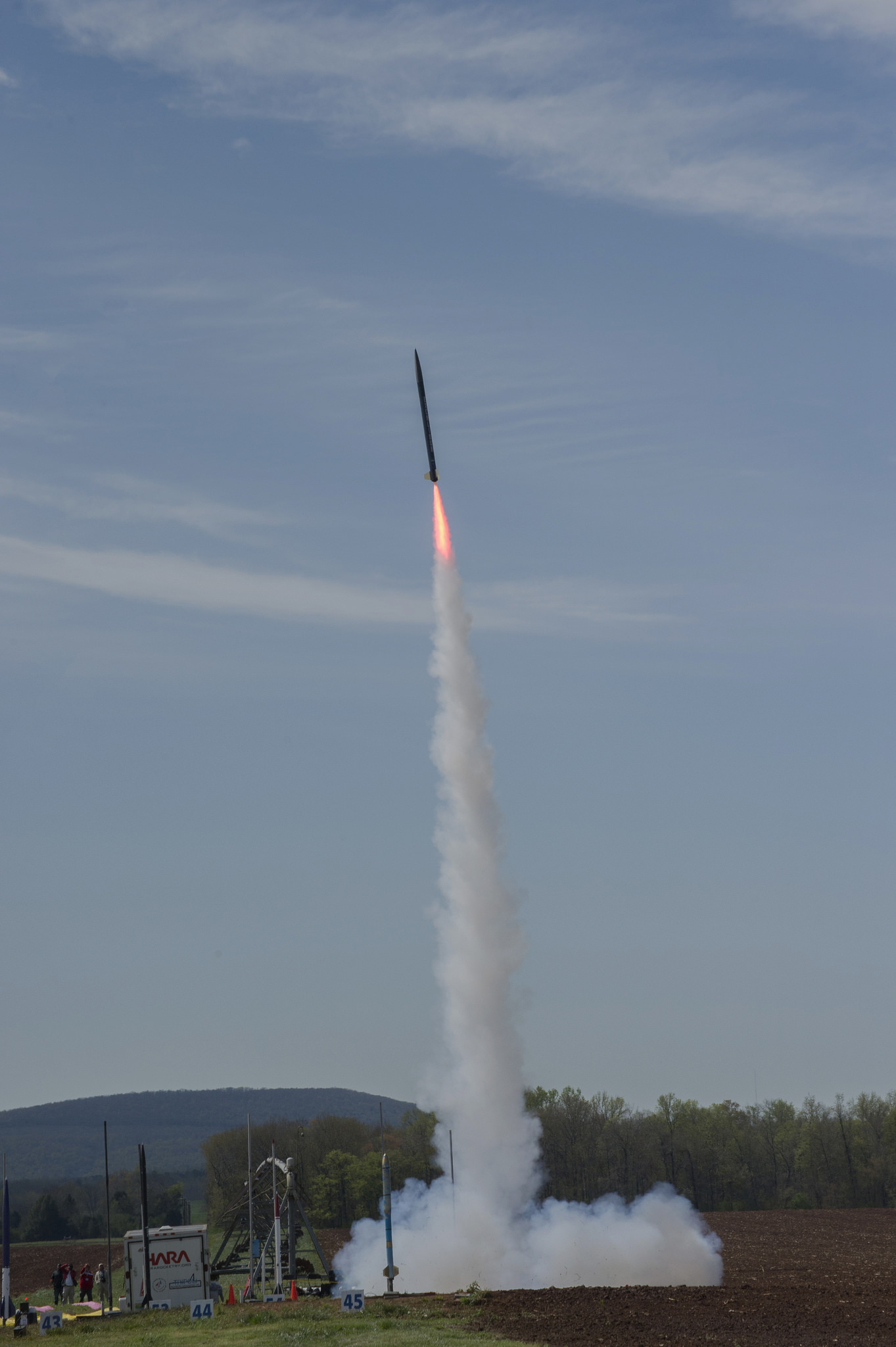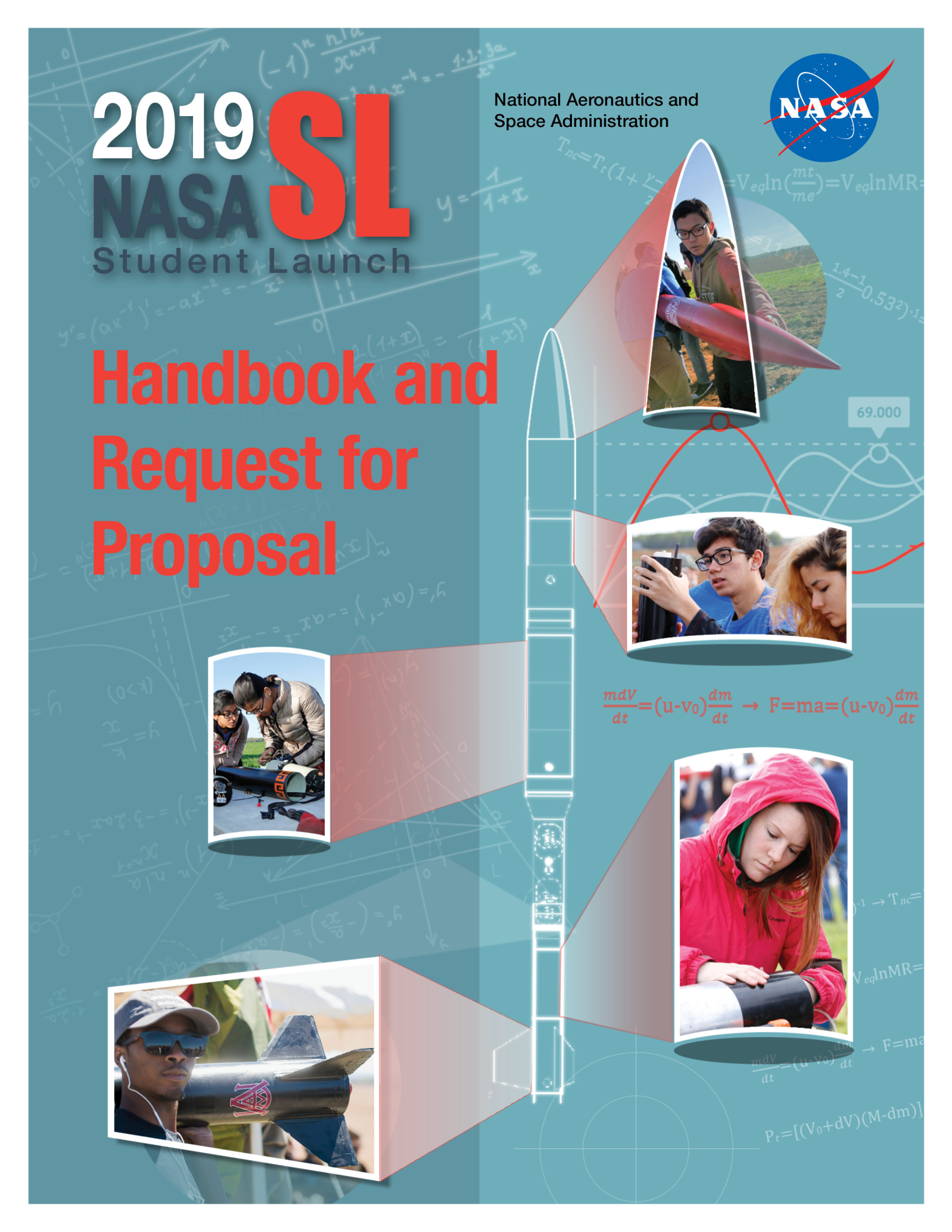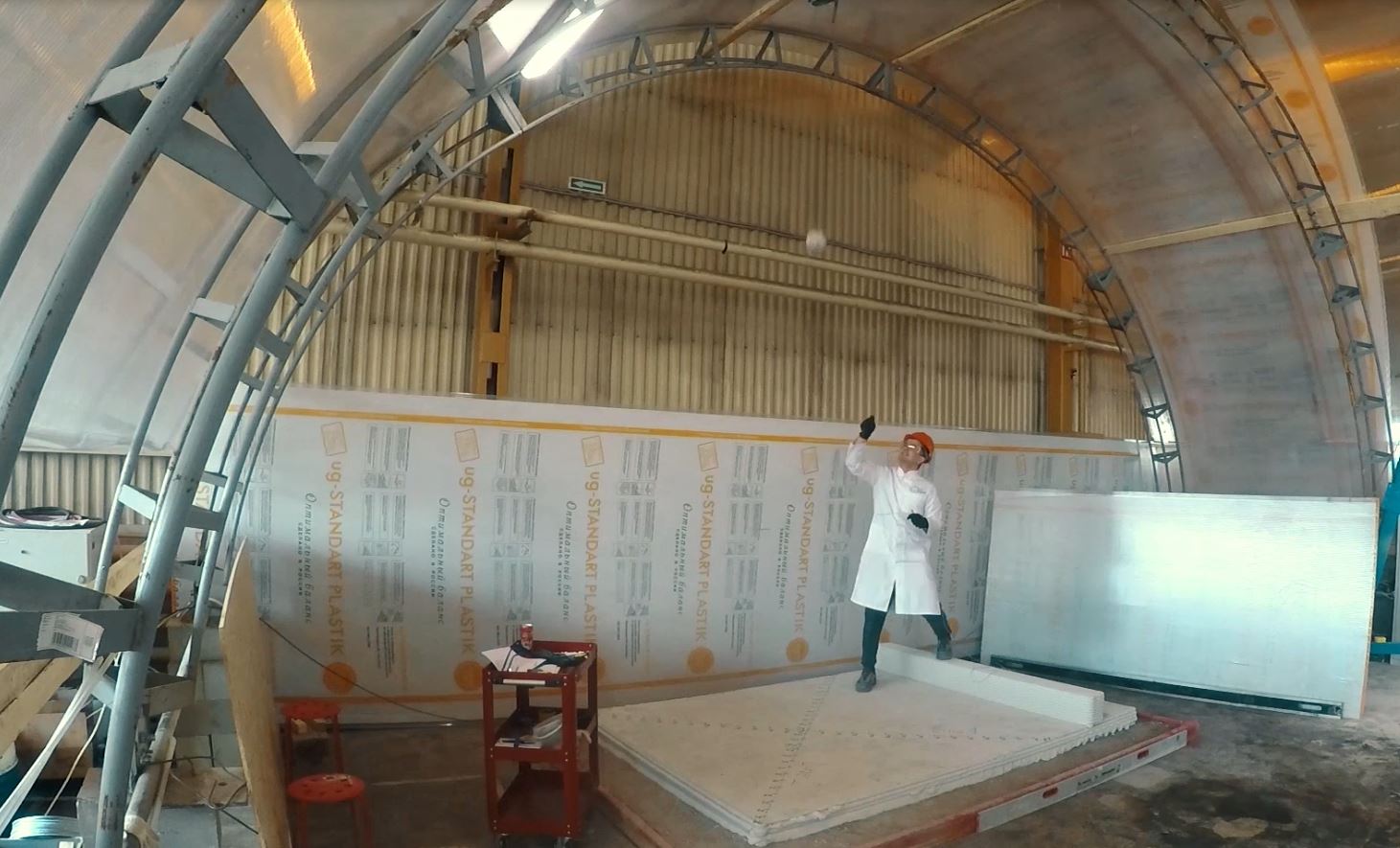In This Week’s Star
- Marshall’s Office of Center Operations Responds to Survey, Tackles Infrastructure
- Marshall Team Members Recognized at Annual Honor Awards
- Competition Open: NASA Student Launch Teams Challenged to ‘Call Their Shot’ in 2019
- Teams Win a Share of $120,000 in Foundation Construction Stage of NASA’s 3D-Printed Habitat Competition
- Marshall, Team Redstone to Share 3D Printing Capabilities, Resources
- Russian Progress 69 Resupply Vehicle Leaves Space Station
- This Week in NASA History: First RS-25 Developmental Test Series Complete – Aug. 27, 2015
- NASA’s InSight Mars Lander and OSIRIS-REx Asteroid Explorer Highlighted on ‘This Week @NASA’
Marshall’s Office of Center Operations Responds to Survey, Tackles Infrastructure
By Rick Smith
Having shared results of its 2017 customer satisfaction survey with the workforce, the Office of Center Operations at NASA’s Marshall Space Flight Center continues to address team members’ insights and executing fast-tempo work to refurbish mission-critical facilities.
Roy Malone, director of the office, said ultimately the goal is to help turn Redstone Arsenal into a state-of-the-art “smart city” — working with partners across the federal installation to nurture a thriving, cost-efficient federal business and technology hub in the heart of Rocket City USA.
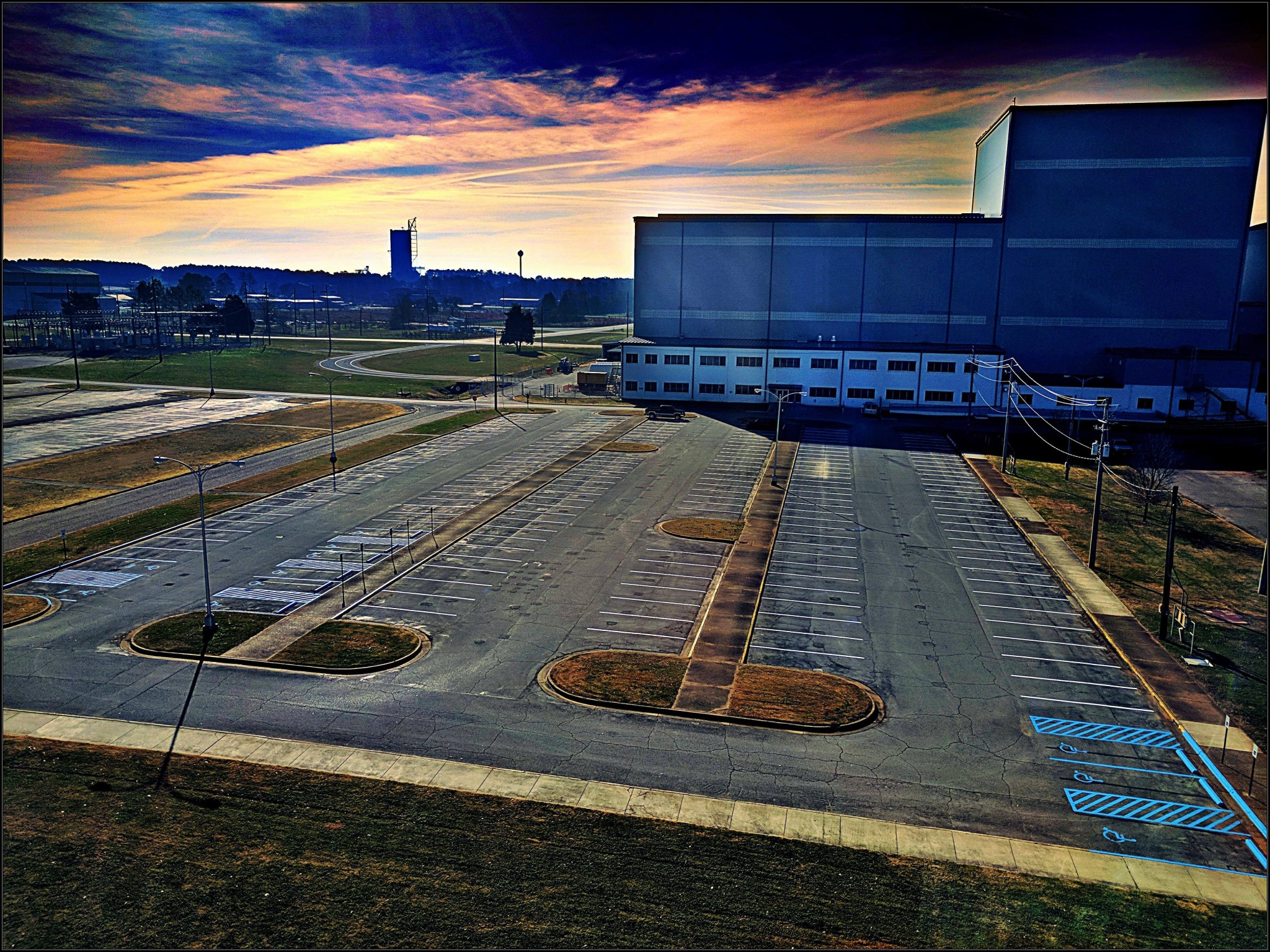
“First and foremost, we put our money into what is needed for the mission,” Malone said. “This trend isn’t just reflected at Marshall. It’s agency-wide. This is the new business model to ensure NASA’s continuing success.”
“The best place in the government to work is getting better,” agreed Bob Devlin, deputy director of Center Operations, referring to NASA’s first-place ranking among federal agencies — for six straight years — according to the annual Partnership for Public Service survey.
Good customer service is integral to that streak, he said. Like many organizations at Marshall, the Office of Center Operations has long refined its tasks and services based on post-action customer surveys. Such “point-of-sale” surveys are regularly conducted by its departments, including the Facilities Management Office and the Logistics Support Services Office.
“What we didn’t have was a survey that encompassed all the services our office provides, asking customers across Marshall how we’re doing our job and what areas they’d like us to address,” said Melvin Scruggs, the office’s resources and integration manager.
The results of that fall 2017 survey, with added insight from the 2018 General Services Administration’s Federal Tenant Survey, have helped guide the team ever since, he said. More than 900 respondents — roughly one in six Marshall personnel — answered the survey, offering suggestions on subjects as diverse as badging, medical services, landscaping and even the process for reporting outages and other issues.
To help make the reporting process easier, the Center Operations team created a 4-HELP ExplorNet page, based on the 4-HELP phone line and featuring quick access to submit facilities work requests and obtain other essential Marshall services. The page also may be reached via a button on the Inside Marshall homepage.
Survey answers also helped Malone and his team identify where to initiate their new refurbishment strategy. Their first target, in late 2017, was Building 4610, one of Marshall’s oldest, continuously used facilities. Its parking lot was restriped, its interiors painted, relighted and updated. The coffee shop also was refurbished, and an upgrade of its heating, ventilation and air conditioning system is underway, Malone said.
The office chose to start there because of the facility’s mission-crucial role. The roughly 70,000-square-foot site is the primary management hub for Marshall’s multi-project operations capability, which includes round-the-clock operations supporting the International Space Station; development of the Space Launch System‘s Engineering Support Center capability; and oversight of the Payload Operations Integration Center.
Upgrades to Building 4708, home to Marshall’s Engineering & Development Laboratory and rapid-prototyping facilities, followed. Center Operations, in partnership with the Marshall Exchange, conducted a complete redesign of the cafeteria to better accommodate users. Updated electrical systems, a high-efficiency water boiler and an uninterruptible power supply are being put into place. New fencing, better access points and parking lot upgrades will follow in the months ahead.
Similar actions are now being planned for Building 4203 and other high-traffic, mission-essential facilities, Malone said. “Despite budget and infrastructure challenges, we will always prioritize mission-essential capabilities to conserve costs,” he added.
Ultimately, turning Redstone Arsenal into a largely self-reliant smart city calls for a radical redesign of shared utilities and infrastructure costs — as NASA and the Army share ownership of the joint 911 center. It also means creating profitable partnerships with commercial firms that need the know-how, hardware and facilities Marshall has long possessed, Malone said.
Smith, an ASRC Federal/Analytical Services employee, supports the Office of Strategic Analysis & Communications.
Marshall Team Members Recognized at Annual Honor Awards
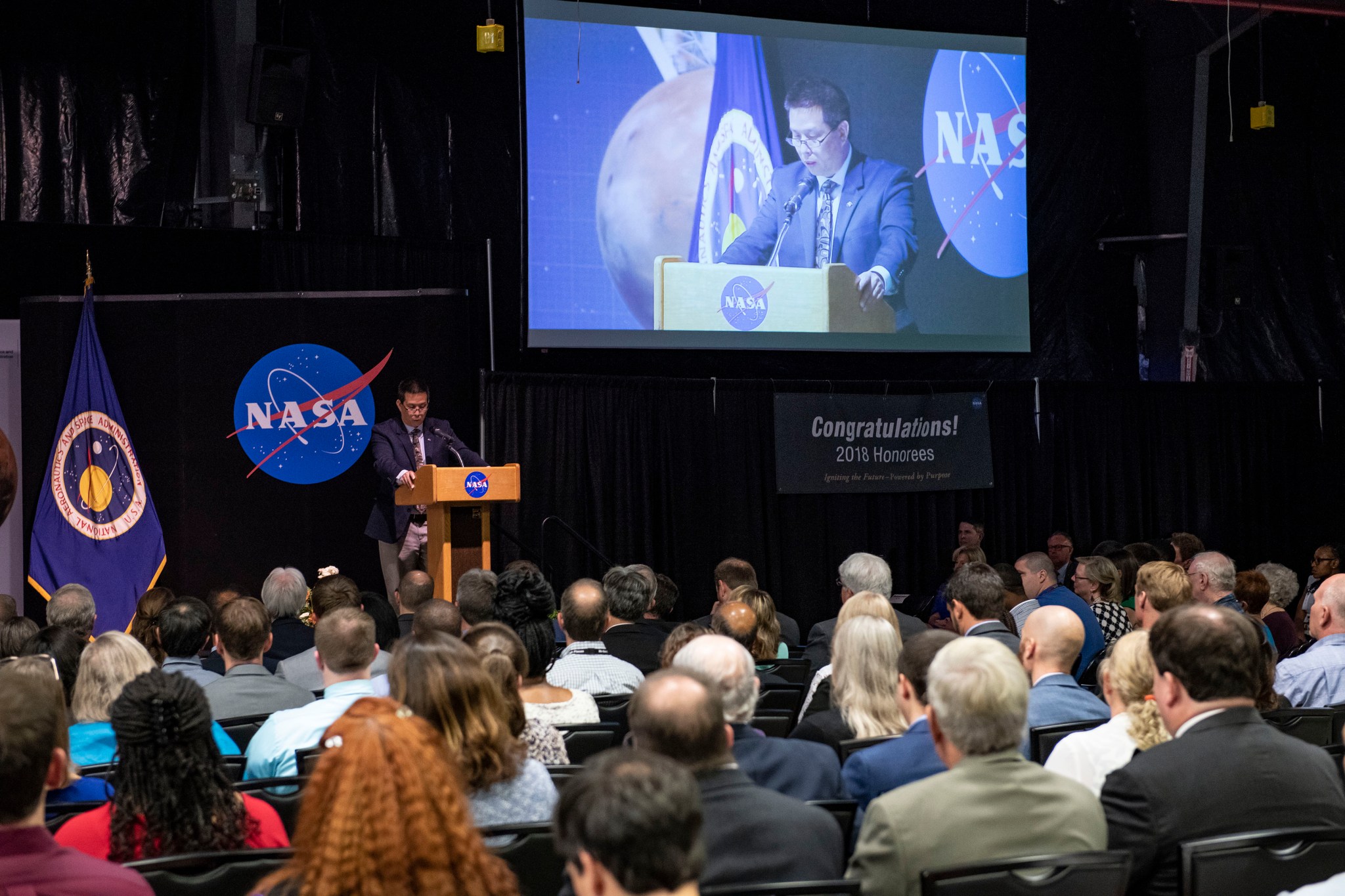
Eugene Tu, director of NASA’s Ames Research Center, addresses honorees and their friends and families Aug. 22 at the 2018 Honor Awards ceremony at NASA’s Marshall Space Flight Center. “We often talk about and show off our amazing facilities ‑‑ the wind tunnels and super computers at Ames to the rocket test stands and facilities here at Marshall,” said Tu. “We all know that it’s the civil servant and contractor workforce at our centers, along with our external partners, that make this all possible.” Tu and Marshall Acting Center Director Jody Singer presented awards to more than 300 Marshall employees, contractors and teams. For more information about the 2018 Honor Awards, click here. (NASA/MSFC/Fred Deaton)
Competition Open: NASA Student Launch Teams Challenged to ‘Call Their Shot’ in 2019
By Will Bryan
The 2018-2019 NASA Student Launch competition handbook is now available, detailing the rules and challenges for middle school, high school and college teams. Student teams interested in participating must submit proposals to the Student Launch team by Sept. 19.
“We are really excited about the changes to Student Launch,” said Katie Wallace, Student Launch program manager. “The new altitude requirements and the payloads relate directly to NASA missions and provide exciting new challenges for our teams. Just as Babe Ruth called his shot when he stepped up to the plate, pointed to center field and smacked a homerun out of the park just where he’d pointed, now we’re asking teams to predict how high their rockets will fly before they launch.”
In the 19th year of competition, gone is the 1-mile altitude target for determining the winner of the altitude award. Instead, teams will predict their rocket’s altitude before launch, and the team coming closest to their prediction will win the award. Changes made to the altitude award and payload options emphasize the diversity and complexity of NASA missions and destinations while providing teams the opportunity to fly their rockets and payloads to altitudes that will maximize the scientific and engineering value gained by their payloads.
While striving to send their launch vehicles thousands of feet into the air, teams also build payloads for their rockets. Teams in the middle and high school division can propose any payload of scientific or engineering curiosity including the payload options of the college and university division. Last year, a team from Madison West High School in Madison, Wisconsin, performed an experiment to image the Sun — evoking thoughts of NASA’s Parker Solar Probe that shipped to Cape Canaveral in the spring and launched Aug. 12.
Teams in the college and university division must select from one of two payloads to develop. The payload options this year are:
- A rover with a robotic arm that deploys after the rocket lands and collects a soil sample
- An unmanned aerial vehicle that deploys either autonomously or by remote control after the rocket lands. The vehicle then takes off and delivers a navigational beacon to a NASA-identified location.
The rover payload debuted last year with overwhelming popularity as 33 of the 45 teams in the college and university division chose to build a rover. The new challenge mimics current missions, such as the Mars Curiosity rover, that collect samples as part of their investigations and future sample return missions.
The unmanned aerial vehicle payload is new to the competition. The vehicle will remain stowed inside the rocket until the rocket lands, when it will deploy from the rocket, fly to a designated target and deploy a navigation beacon. The vehicle can be a commercial-off-the-shelf drone. Once the vehicle has autonomously oriented and unpacked itself inside the rocket, teams have the option of deploying it and performing its flight maneuvers autonomously or by remote control. Teams choosing this payload will be following in the footsteps of engineers at NASA’s Jet Propulsion Laboratory who are currently developing a helicopter to fly through the thin atmosphere of Mars during the Mars 2020 mission.
During the eight-month-long Student Launch program, the selected teams will design, build and test their payloads, rockets and its components — such as the parachutes — while meeting multiple documentation and review milestones with NASA experts. Teams must also plan and execute science, technology, engineering and mathematics — STEM — outreach. The program is designed to simulate the real-world process NASA and industry engineers follow when developing a new rockets, experiments and hardware.
The Academic Affairs Office at NASA’s Marshall Space Flight Center manages Student Launch to advance NASA’s mission through the collaboration with educational institutions and students. NASA’s Human Exploration and Operations Mission Directorate and the Office of STEM Engagement, as well as Northrop Grumman and the Huntsville chapter of the National Space Club provide funding and leadership for the initiative.
Bryan, an ASRC Federal/Analytical Services employee, supports the Office of Strategic Analysis & Communications.
Teams Win a Share of $120,000 in Foundation Construction Stage of NASA’s 3D-Printed Habitat Competition
Three teams will share a $120,000 prize offered in the second of five levels of phase 3 of NASA’s 3D-Printed Habitat Centennial Challenge competition. The goal of the public challenge is to create sustainable shelters suitable for the Moon, Mars or beyond using resources available on site. The five levels put teams to the test in all areas of 3D-printing, from using software to design habitats to developing materials that can be used to print a physical structure.
After evaluating the Level 2 entries, the challenge partner Bradley University in Peoria, Illinois, and NASA selected the following teams for award:
- SEArch+/Apis Cor of New York — $55,154.77
- Pennsylvania State University, State College, Pennsylvania — $32,914.75
- FormForge|Austin Industries|WPM of Austin, Texas — $31,930.48
For this level of the competition, teams had to additively construct a foundation slab without human intervention. The slabs were evaluated and scored based on multiple criteria, including strength, durability and material composition. To test their strength, a standard Olympic shot put was dropped on each slab three times to simulate a meteor strike. For durability, each slab was subjected to freeze/thaw tests, enduring temperature extremes. The teams earned prize money based on scores assigned by a panel of subject matter experts from NASA, academia and industry.
“This level prepares the teams for more difficult levels to come, and they had to do it autonomously, which adds an extra level of difficulty that will be necessary for space exploration,” said Monsi Roman, program manager for NASA’s Centennial Challenges. “Each of the skills tested in these levels will come into play for the final competition next spring.”
The 3D-Printed Habitat Challenge, which began in 2015, is structured in phases, each with multiple levels. Phases to date include:
Phase 1, (completed) the Design Competition, required teams to submit architectural renderings and was completed in 2015. ($50,000 prize purse)
Phase 2, (completed) the Structural Member Competition, focused on material technologies, requiring teams to create structural components. It was completed in 2017. ($1.1 million prize purse)
Phase 3 (current), the On-Site Habitat Competition, comprises five levels that test teams’ ability to advance technology to autonomously construct a habitat and will culminate in a head-to-head habitat print in April 2019. ($2 million prize purse)
The challenge is managed through a partnership with NASA’s Centennial Challenges program and Bradley University. Bradley has partnered with sponsors Caterpillar, Bechtel, Brick & Mortar Ventures and the U.S. Army Corps of Engineers to administer the competition. NASA’s Centennial Challenges program is part of the agency’s Space Technology Mission Directorate, and is managed at NASA’s Marshall Space Flight Center.
Marshall, Team Redstone to Share 3D Printing Capabilities, Resources
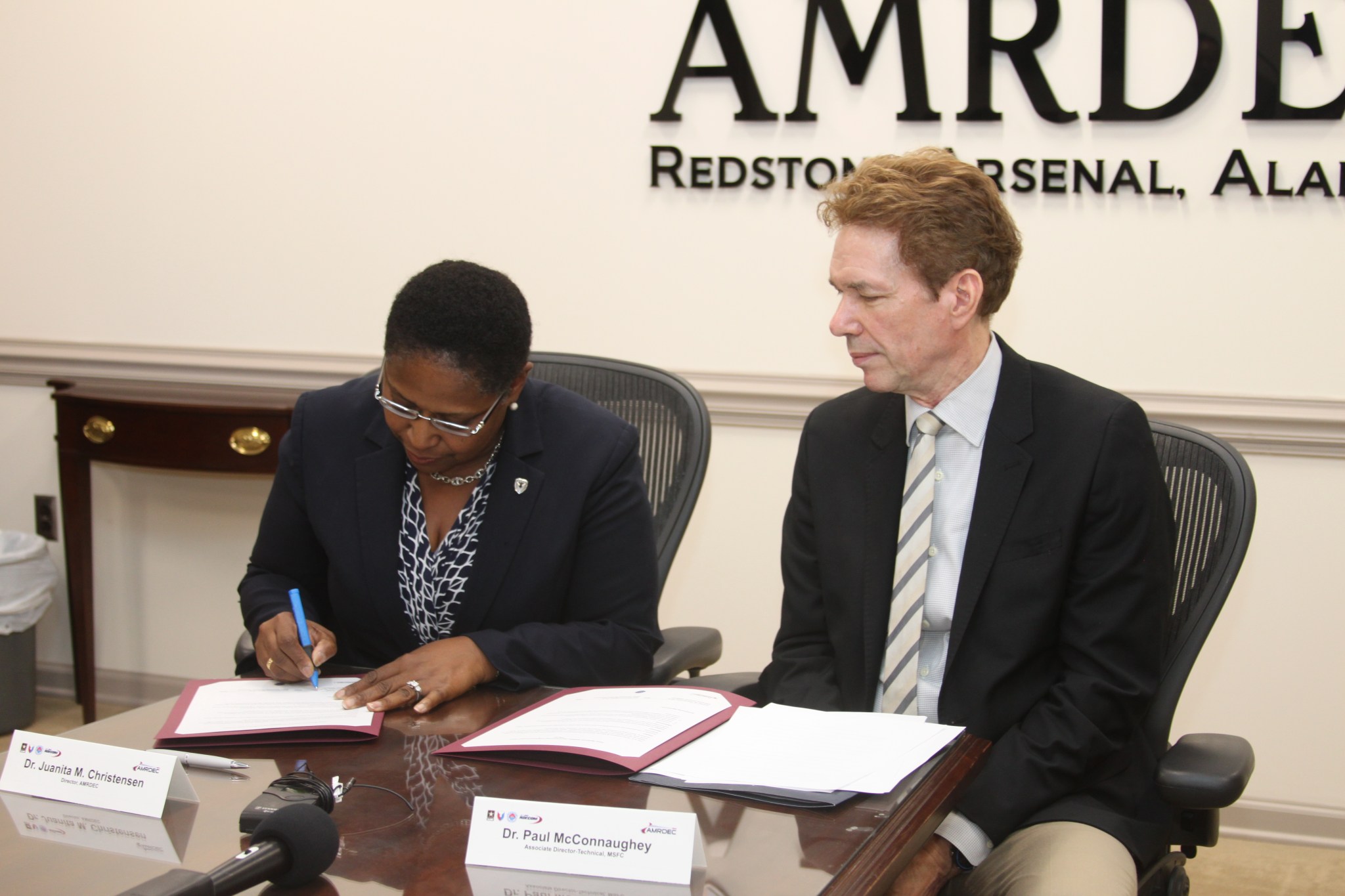
Paul McConnaughey, right, associate technical director of NASA’s Marshall Space Flight Center, looks on as Juanita Christensen, director of the U.S. Army Aviation, Missile, Research, Development and Engineering Center, signs a renewed partner agreement Aug. 20 to share additive manufacturing or 3D-printing knowledge and resources across Team Redstone — the coalition of federal government organizations on Redstone Arsenal. Of the benefits promised by the partnership, McConnaughey said, “Our investments and innovations in additive manufacturing will not only aid NASA’s endeavors but are good for the nation, bolstering the manufacturing sector as a whole. I look forward to the amazing and innovative work we’ll continue to accomplish together.” (Image courtesy of Nikki Ficken, AMRDEC Public Affairs)
Russian Progress 69 Resupply Vehicle Leaves Space Station
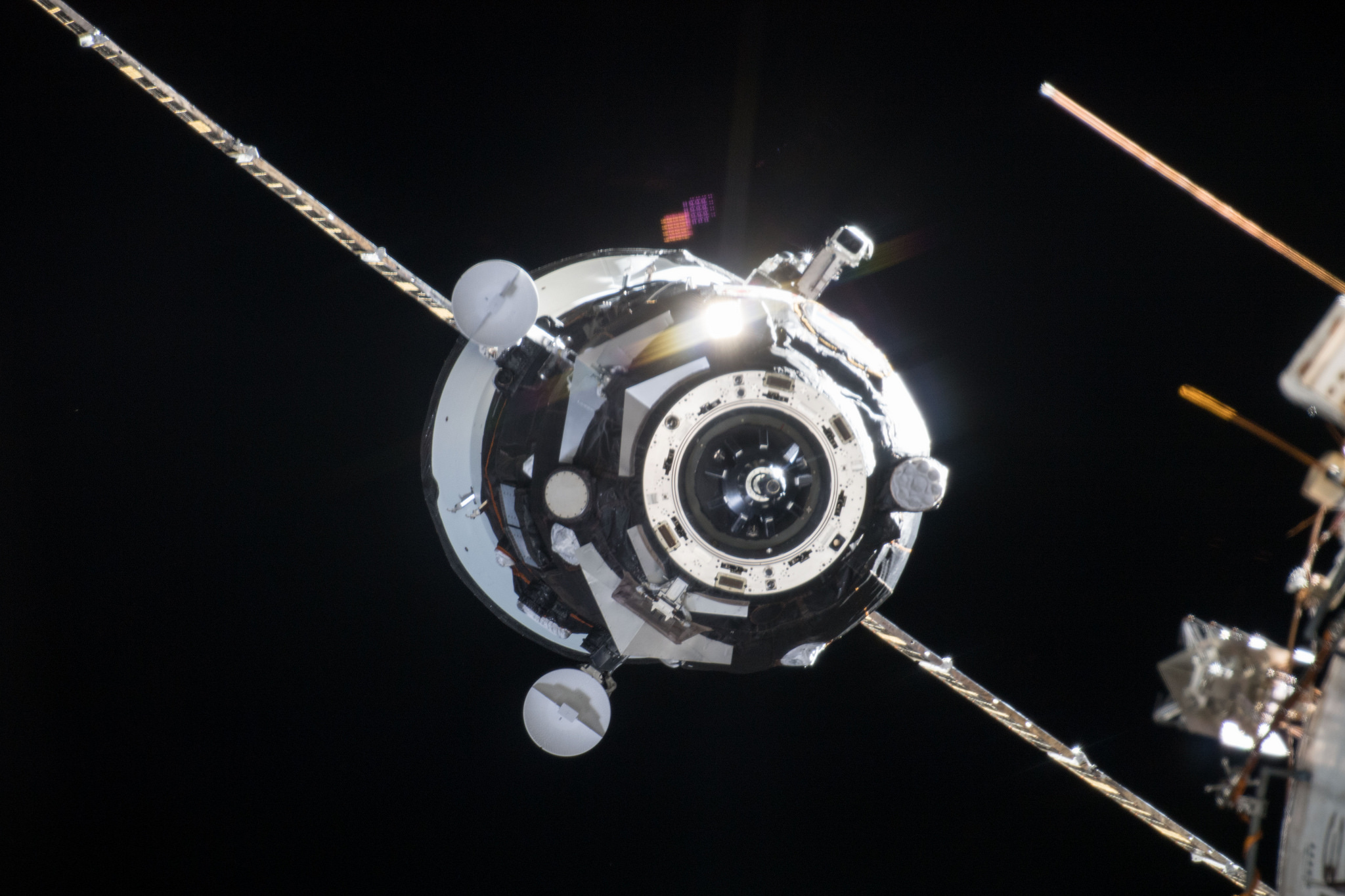
The Russian Progress 69 cargo craft undocked from the aft port of the Zvezda Service Module of the International Space Station Aug. 22, completing a six-month delivery run to the orbital outpost. Loaded with trash, the unpiloted Progress will move to a safe distance from the orbital laboratory for a week’s worth of engineering tests by Russian flight controllers before it is commanded to deorbit Aug. 29. It will then burn up harmlessly in Earth’s atmosphere over the Pacific Ocean. The next resupply mission is coming from the Japan Aerospace Exploration Agency’s “Kounotori” H-II Transfer Vehicle. It is targeted for launch Sept. 10 to deliver science and supplies, including the Life Sciences Glovebox, developed and managed by NASA’s Marshall Space Flight Center. (Credit: NASA)
This Week in NASA History: First RS-25 Developmental Test Series Complete – Aug. 27, 2015
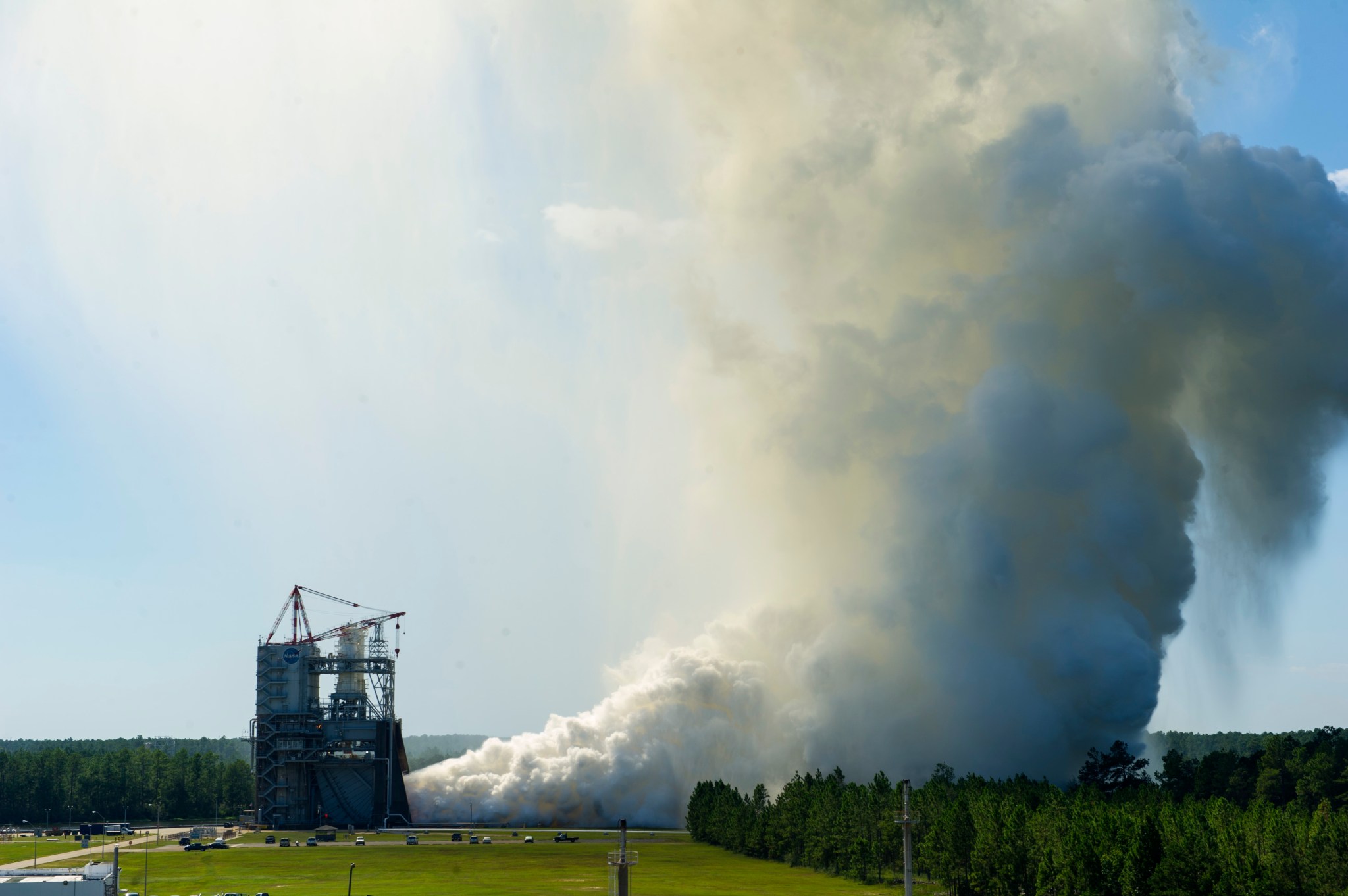
This week in 2015, NASA completed the first developmental test series for the RS-25 engines that will power the core stage of NASA’s Space Launch System. The series was designed to validate the new engine controller and engine performance at the higher thrust level before testing the actual flight engines. Here, the seventh and final test of the series is run at NASA’s Stennis Space Center’s A-1 Test Stand for a full-duration, 535 seconds. The Space Launch System is being developed and tested at NASA’s Marshall Space Flight Center and will be the most powerful rocket ever built, enabling a new era of exploration beyond low-Earth orbit, launching crew and cargo on deep space exploration missions to the Moon, Mars and beyond. The NASA History Program is responsible for generating, disseminating, and preserving NASA’s remarkable history and providing a comprehensive understanding of the institutional, cultural, social, political, economic, technological and scientific aspects of NASA’s activities in aeronautics and space. For more pictures like this one and to connect to NASA’s history, visit the Marshall History Program’s webpage. (NASA)
NASA’s InSight Mars Lander and OSIRIS-REx Asteroid Explorer Highlighted on ‘This Week @NASA’
NASA’s InSight Mars lander is halfway to the Red Planet, and the OSIRIS-REx asteroid explorer caught its first glimpse of its target asteroid, Bennu. These stories are featured in “This Week @NASA,” a weekly video program broadcast nationwide on NASA-TV and posted online.
InSight has passed the halfway point on its six-month, 300-million-mile voyage to Mars. The spacecraft is targeted to touch down on the Red Planet in November. The InSight team is using the time before the spacecraft’s arrival at Mars to plan and practice for that critical day and to activate and check spacecraft subsystems vital to cruise, landing and surface operations — including the highly sensitive science instruments. InSight will be the first mission to study Mars’ deep interior.
NASA’s OSIRIS-REx spacecraft has sent back its first image of asteroid Bennu. Seen in a series of shots from a distance of about 1.4 million miles, Bennu appears as a single pixel. It was imaged as the spacecraft began the mission’s initial science operations and final approach phase toward the asteroid. OSIRIS-REx — the agency’s first-ever asteroid sample return mission — will arrive at Bennu in December and return a sample from the asteroid in September 2023.
InSight and OSIRIS-REx are part of NASA’s Discovery and New Frontiers programs, respectively. NASA’s Marshall Space Flight Center manages both programs for the agency.
View this and previous episodes at “This Week @NASA” on NASA’s YouTube page.



























